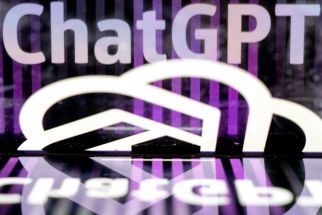Fight cybercrimes with cyber enforcement system
December 6, 2000 | 12:00am
Spreading of computer viruses and hacking into systems to destroy, damage or render them useless are the more popular threats to the New Economy today. But new and improved versions of theft, vandalism, counterfeiting and slander have now invaded the information highway.
"The fundamental restructuring of society around technology gives rise to a new threat – the high technology criminal," John Kendall, Unisys Corp.’s general manager for the Asia Public Sector, said during the recently concluded seventh annual national convention of the Government Organization for Information Technology (GO-IT) held in Palawan.
The digital promise of anytime, anywhere online access to government and commercial transaction services and information comes with a catch, namely technology dependency and high technology crimes.
Kendall noted that lack of technological understanding by individuals and organizations plus society’s naive trust in technology contribute to the occurrence of cybercrimes.
Other conditions are ease of information accessibility to those with dishonest intentions, Internet speed, pseudo-anonymity of perpetrators, lower cost of increasingly powerful computers, lack of public outcry due to limited ethical standards of conduct, and the existence of online guides for high-tech crimes.
Virtual reality, e-cash, wireless data, portals and desktop video-conferencing are just a few technology trends that are expected to be prevalent by 2010. Rapidly increasing reliance of business transactions, personal records, telecommunications and management of basic infrastructure on these and other digital technologies renders citizens, businesses and governments vulnerable to the threat of high-tech crimes.
Kendall cited a nightmare scenario where cyberterrorists hack into power, telephone or banking systems to shut down national power grids, telecommunications networks or alter financial records of businesses and individuals. Criminal organizations may also leverage e-commerce for fraud, drug trade, illegal gambling, sex trafficking, piracy and money laundering.
The real danger, Kendall said, is if law enforcement agencies adopt a "wait and see" attitude rather than take up the responsibility to protect individuals and organizations from these techno-threats, however difficult the task may be. Unfortunately, law enforcement agencies are typically unable to identify cybercrime perpetrators with traditional investigative tools and resources.
Kendall stressed, "E-commerce laws enable e-commerce, but generally do not adequately protect against cyber threats. Technology is changing all the rules. The big no longer eats the small, instead the fast eats the slow."
Battling criminal acts in the New Economy calls for the integration of information technology to supplement the traditional form of emergency response and criminal investigation. For example, in an e-Emergency response, there has to be an early warning system and specially trained SWAT teams to diagnose the threat and disseminate containment guidelines. Such e-Emergency SWAT teams must also maintain links with corresponding teams worldwide.
In another instance, like money laundering, systems should be able to identify and investigate suspicious electronic fund transactions and follow the money trail. In this case, information sharing with international law enforcement agencies and financial institutions becomes vital.
"Training and technical support for justices and attorneys involved in cyber cases will be a challenge for the court system," Kendall said.
Another tool in the cybercrime fighter’s arsenal is an Integrated Criminal Justice System. Such systems use automated identification and records, computerized criminal history and other special databases that assist law enforcement officers in solving high-tech crimes.
Kendall also recommended increased public awareness and law enforcement education on the seriousness and unique aspects of cybercrimes. Along with this, law enforcement agencies must establish special task forces that will deal with incidents of cybercrime, terrorism or attacks on the e-commerce infrastructure. Moreover, individuals and organizations must take precautions against cyber threats.
Based in Kuala Lumpur, Kendall is responsible for all Unisys Public Sector businesses in the Asian region – including a number of large IT and electronic government infrastructure projects with the governments of Korea, Malaysia, Thailand, the Philippines, Singapore and Hong Kong.
Unisys is an e-business solutions company whose 36,000 employees help customers in 100 countries apply information technology to seize opportunities and overcome challenges of the Internet economy.
The company offers a rich portfolio of "e-@ction" solutions for electronic businesses based on its expertise in vertical industry solutions, network services, outsourcing, system integration and multivendor support, coupled with enterprise-class server and related technologies. The primary vertical markets Unisys Phils. serves include financial services, communications and the public sector. Unisys also offers cross-industry solutions to address e-business challenges common in a range of markets.
"The fundamental restructuring of society around technology gives rise to a new threat – the high technology criminal," John Kendall, Unisys Corp.’s general manager for the Asia Public Sector, said during the recently concluded seventh annual national convention of the Government Organization for Information Technology (GO-IT) held in Palawan.
The digital promise of anytime, anywhere online access to government and commercial transaction services and information comes with a catch, namely technology dependency and high technology crimes.
Kendall noted that lack of technological understanding by individuals and organizations plus society’s naive trust in technology contribute to the occurrence of cybercrimes.
Other conditions are ease of information accessibility to those with dishonest intentions, Internet speed, pseudo-anonymity of perpetrators, lower cost of increasingly powerful computers, lack of public outcry due to limited ethical standards of conduct, and the existence of online guides for high-tech crimes.
Virtual reality, e-cash, wireless data, portals and desktop video-conferencing are just a few technology trends that are expected to be prevalent by 2010. Rapidly increasing reliance of business transactions, personal records, telecommunications and management of basic infrastructure on these and other digital technologies renders citizens, businesses and governments vulnerable to the threat of high-tech crimes.
Kendall cited a nightmare scenario where cyberterrorists hack into power, telephone or banking systems to shut down national power grids, telecommunications networks or alter financial records of businesses and individuals. Criminal organizations may also leverage e-commerce for fraud, drug trade, illegal gambling, sex trafficking, piracy and money laundering.
The real danger, Kendall said, is if law enforcement agencies adopt a "wait and see" attitude rather than take up the responsibility to protect individuals and organizations from these techno-threats, however difficult the task may be. Unfortunately, law enforcement agencies are typically unable to identify cybercrime perpetrators with traditional investigative tools and resources.
Kendall stressed, "E-commerce laws enable e-commerce, but generally do not adequately protect against cyber threats. Technology is changing all the rules. The big no longer eats the small, instead the fast eats the slow."
Battling criminal acts in the New Economy calls for the integration of information technology to supplement the traditional form of emergency response and criminal investigation. For example, in an e-Emergency response, there has to be an early warning system and specially trained SWAT teams to diagnose the threat and disseminate containment guidelines. Such e-Emergency SWAT teams must also maintain links with corresponding teams worldwide.
In another instance, like money laundering, systems should be able to identify and investigate suspicious electronic fund transactions and follow the money trail. In this case, information sharing with international law enforcement agencies and financial institutions becomes vital.
"Training and technical support for justices and attorneys involved in cyber cases will be a challenge for the court system," Kendall said.
Another tool in the cybercrime fighter’s arsenal is an Integrated Criminal Justice System. Such systems use automated identification and records, computerized criminal history and other special databases that assist law enforcement officers in solving high-tech crimes.
Kendall also recommended increased public awareness and law enforcement education on the seriousness and unique aspects of cybercrimes. Along with this, law enforcement agencies must establish special task forces that will deal with incidents of cybercrime, terrorism or attacks on the e-commerce infrastructure. Moreover, individuals and organizations must take precautions against cyber threats.
Based in Kuala Lumpur, Kendall is responsible for all Unisys Public Sector businesses in the Asian region – including a number of large IT and electronic government infrastructure projects with the governments of Korea, Malaysia, Thailand, the Philippines, Singapore and Hong Kong.
Unisys is an e-business solutions company whose 36,000 employees help customers in 100 countries apply information technology to seize opportunities and overcome challenges of the Internet economy.
The company offers a rich portfolio of "e-@ction" solutions for electronic businesses based on its expertise in vertical industry solutions, network services, outsourcing, system integration and multivendor support, coupled with enterprise-class server and related technologies. The primary vertical markets Unisys Phils. serves include financial services, communications and the public sector. Unisys also offers cross-industry solutions to address e-business challenges common in a range of markets.
BrandSpace Articles
<
>
- Latest
Latest
Latest
May 15, 2024 - 1:09pm
By Glenn Chapman | May 15, 2024 - 1:09pm
April 25, 2024 - 5:56pm
April 25, 2024 - 5:56pm
April 24, 2024 - 1:00pm
April 24, 2024 - 1:00pm
Recommended

























